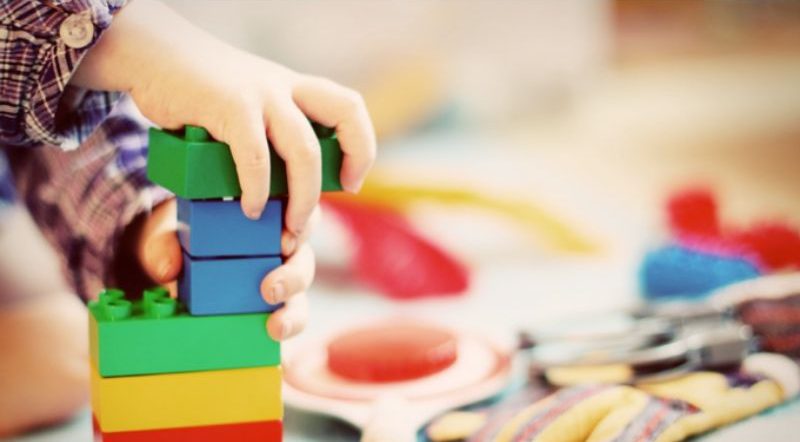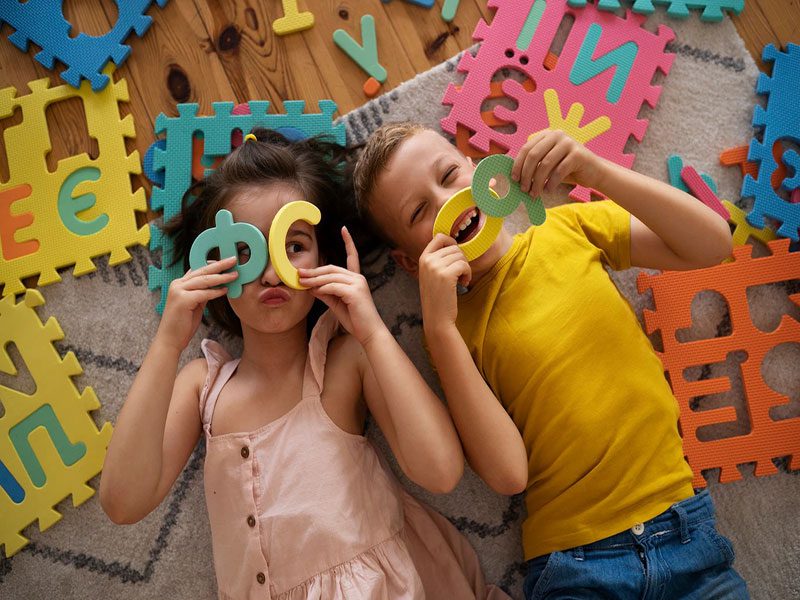As we grow up and learn about our environment, our cognitive skills develop and our emotional and social well-being strengthens. Skills such as problem solving or creativity may be influenced by the way we learn through play in childhood.
Games are used to help children explore learning without risk of failure or pressure from adults. Engaging students in an interactive game is a great way for children to learn a skill, practice it, and master it.
That’s what we’ll focus on today, looking at the benefits and some techniques for learning through play.
Context of learning through play
Preschool education has been a popular topic for decades, and recent research on the subject is quite revealing. It states that during this stage, the development of cognitive skills, emotional well-being, social competence, and good physical and mental health form a solid foundation for success.
In early childhood, learning acquisition occurs at a speed that will be difficult to match later in life. This is why it is important to add as many skills as possible during this period and why learning through play is important.
What is learning through play?
This learning technique helps children learn by giving them the freedom to explore and do things on their own. They do not feel pressured by other people’s opinions or expectations, which builds more confidence in the subject.
Learning through play is relevant for children to master their skills and learn from each other. This allows children to truly be in control of their learning experience and develop with confidence.
Engaging in and promoting education through play, as well as through homework, is also an unbeatable way for children to direct their own progress while developing close relationships with teachers and peers.
Types of learning through play
Learning through play is a fundamental way to stimulate the development of successful men and women. They will offer opportunities and experiences different from those offered by normal activities. Play teaches children skills such as self-control, teamwork and leadership, it can be said to be a complete learning.
Knowing this, we review the types of learning through play that are most popular with teachers around the world.
Board games
These games can be a win-win scenario or a lose-lose scenario, depending on how well the players coordinate with each other.
In this type of methodology, children do not want to be the best, nor is that all that matters, that is the first learning. This game is not about winning and losing. It’s about working with your fellow players to achieve group goals together.
Other benefits include the following: skill development in children, family bonding, building a sense of community. Some board games that you can apply to your group of students are:
My First Fruit Tree
This game is great for kids as it doesn’t have many rules and any adult can join the game. It is also a great drawing game and is perfect for younger players.
The object of the game is to collect as many pieces of fruit as possible. The team does this by taking turns and rolling a die. If the color of their roll is on the pieces, they can place them in the basket to find out if it belongs to them or not. Alternatively, a crow can advance along a tile path that leads to victory in solo.

Little Cooperation
In this arctic scenario, 4 small animals try to get back to their igloo before the ice pillars of the bridge melt and the bridge falls down.
The two players must move an animal or remove a pillar, each time the die is rolled. When there are only a few pillars left, they have to manage to keep their balance by slowly removing these towers, so their motor skills are put to the test. Teaching cooperation is key since this skill will remain with them for the rest of their lives and help them in a lot of situations.
Hop Hop Hop Hop
Players must get all the sheep into the sheepfold by working together. The object of this game is to get a group of sheep to the shelter before you lose them in a storm. It is a fun cooperative game where skill, teamwork and creativity come into play.
There is a board with players, a die and 3D wooden pieces where the wind symbol appears on the dice. Players in this game are working together to win: there is cooperation and chance involved. It does not use advanced 3D graphics, but has an aesthetically pleasing 7″ x 11″ game board with small logs to be picked up with the fingers.
Outdoor games
Activities that involve helping, empathy, organization and decision making reduce frustrations and success stories show how children feel less pressure to succeed. Benefits they access when they play outdoors, for example.
We will mention some of the most popular outdoor games during the application of a learning methodology that focuses on play.
The chain
In the game, two children start holding hands and form a chain with themselves as the first two links. They need to touch their neighbors to join the chain. The children in the chain try to run away from any touch they get. If a child is touched, he or she grabs those next to him or her in the chain.
When a player successfully tags the last player, the game ends and the next round begins. The other two players are “tagged” in this round and are the ones who must start the chain again.
The balloon
In this game, players will throw an inflated balloon into the air that cannot touch the ground. To win, as players walk away from their balloon, they choose to “touch the ball together” to prevent it from falling with the group effort.
Bounce, bounce
You must make a circle on the floor with the chalk. Children should take an empty soda can or plastic or juice bottle and place it right in the middle of the circle. They will make a raffle to see who gets it, that is, who starts.
The one chosen must stand with his or her back to the can or can. Another child must kick the can. At this point, while picking it up, the others must hide.
The previously chosen participant must pick it up and put it back in the circle and shout “can” at that moment to announce that the rest must stop their search for hiding.
From then on, whoever is chosen will have to go looking for the rest of the group. If he sees any of them, he will run back to the circle, stick his foot in and yell “BOOT for Carlos!” or whatever his player name is.
Carlos will have to come out of hiding and stand inside the circle until the chosen one finds the rest. Although if any of the members decide to take a risk, they can free the “hunted” just by kicking the boat out of the circle again.
Digital games
One of the main advantages of technology focused on pedagogy is that it can be used by all kinds of students, regardless of age or subject matter. But there is also the fact that they learn while having fun.
For example, there are a variety of games aimed at teachers seeking to increase the quality of education they provide to their students. Some clear examples of digital games to stimulate cooperative learning are:
Socrative
This app’s online quizzes allow students to answer questions without having to create a long survey, so they get more retention when learning. They also show ratings that can be useful to evaluate and measure the effectiveness of the survey answers and, therefore, the efficiency of learning as a result of the game.
It is free as long as the maximum number of students is 50, and offers premium plans that provide more extensive educational content.
Elever
Gamification, methodology and intelligent assessment is what this gamified learning app is all about. It is designed to convert continuous use of the app to achieve student proficiency.
The app has several versions for different roles in the classroom, so students have one with which they advance with exercises and games, and teachers have one with which they monitor their students’ work on science topics.

Minecraft: Education Edition
Video games are a learning method that allows teachers to assign topics according to the desired curriculum. And in this sense, Minecraft is a clear successful example.
Gamification has become a tool for education, as college students take advantage of its simplicity to provide better learning experiences and help make their classes more entertaining.
Benefits of learning through gamification
Development and learning are complex and holistic in nature, but they can be fostered through play, especially when it comes to a child!
Children generally use a wide range of computational skills and processes at the same time when they play. In particular, young children can develop competencies in the following areas, all vital for personal growth.
Motivation
Play invites active participation and collective learning. Children often combine different types of physical, mental and verbal skills during play, as seen in research on typical child development.
It is an intuitive way to learn about your children and will keep them motivated about their activities, their environment, and even their ability to interact with their world.
Inclusion
The game is designed to be interactive and constructive. It has been used by schools and youth organizations across the country to promote and facilitate social interaction in a safe and fun environment.
Critical Thinking
By interacting with various elements during the game, children gain the ability to problem solve and develop individual positions in any given situation. Play is a recreation of what they will see as they begin to interact with others.
Decision-making
When exposed to social pressure, having to solve problems quickly or mediate conflict situations, dealing with discomfort and other emotions, children gain the skills necessary for assertiveness.
Teamwork
Since they have to form groups and share with different personalities, as well as join or confront each other to achieve common goals, teamwork is a necessity and, therefore, another competence that can be developed during play.
Creativity
Different terrains, textures, effort and physical skills put to the test. It all makes the child develop a varied version of the world around him. Creativity is a skill that is always at its best when combined with fun.
Student-centered
Although the work is teamwork in almost all games, the results are individual, i.e. the children can feel (also the parents) that the game is of particular benefit to them.

We at Plus Project are passionate about transforming the adult education landscape. As a premier training provider, we take pride in offering top-notch courses for teachers, aimed at sharpening their skills and expanding their knowledge. Our expert trainers use cutting-edge methods to deliver a dynamic and engaging learning experience, making us the ideal choice for teachers seeking professional growth and success. Join us on our mission to elevate the teaching profession, one course at a time.

